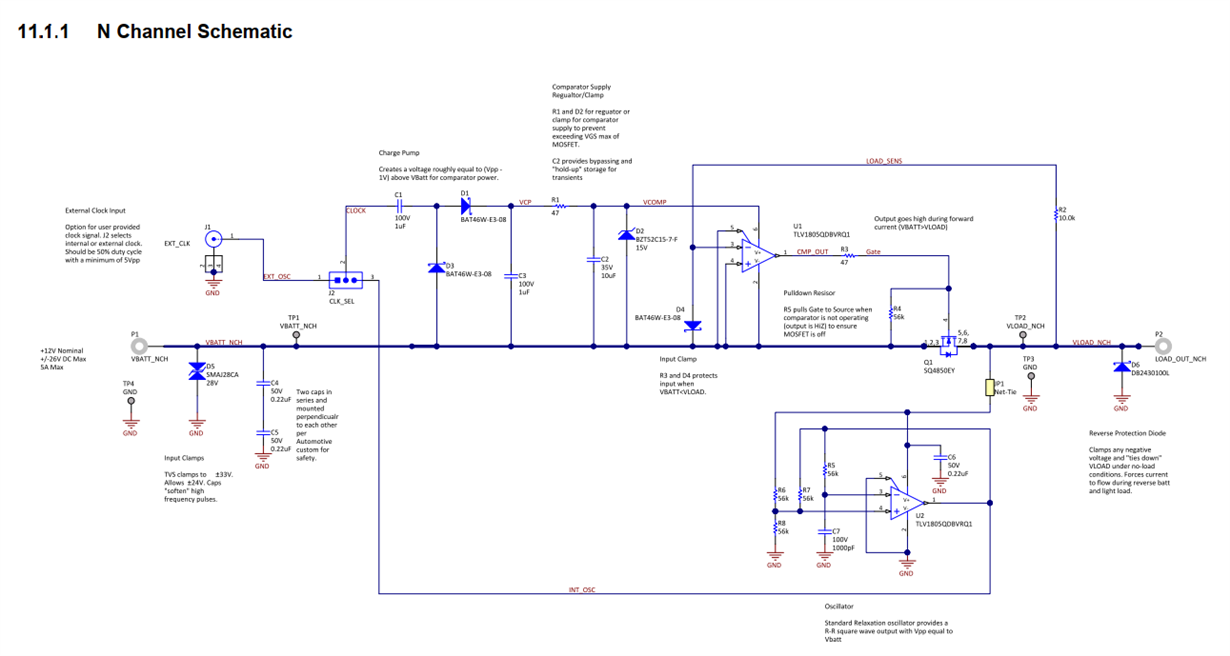Hello,
Would you please explain how the D4 Schottky between IN+ and IN- works? And in what situation? In the datasheet this is for an event like reverse supply, but I cannot understand what is the concern.
I would also like you to explain how the D6 Zener across the load works. I cannot understand how floating load can turn on the FET.
Thanks.
Oguri (TIJ automotive FAE)


